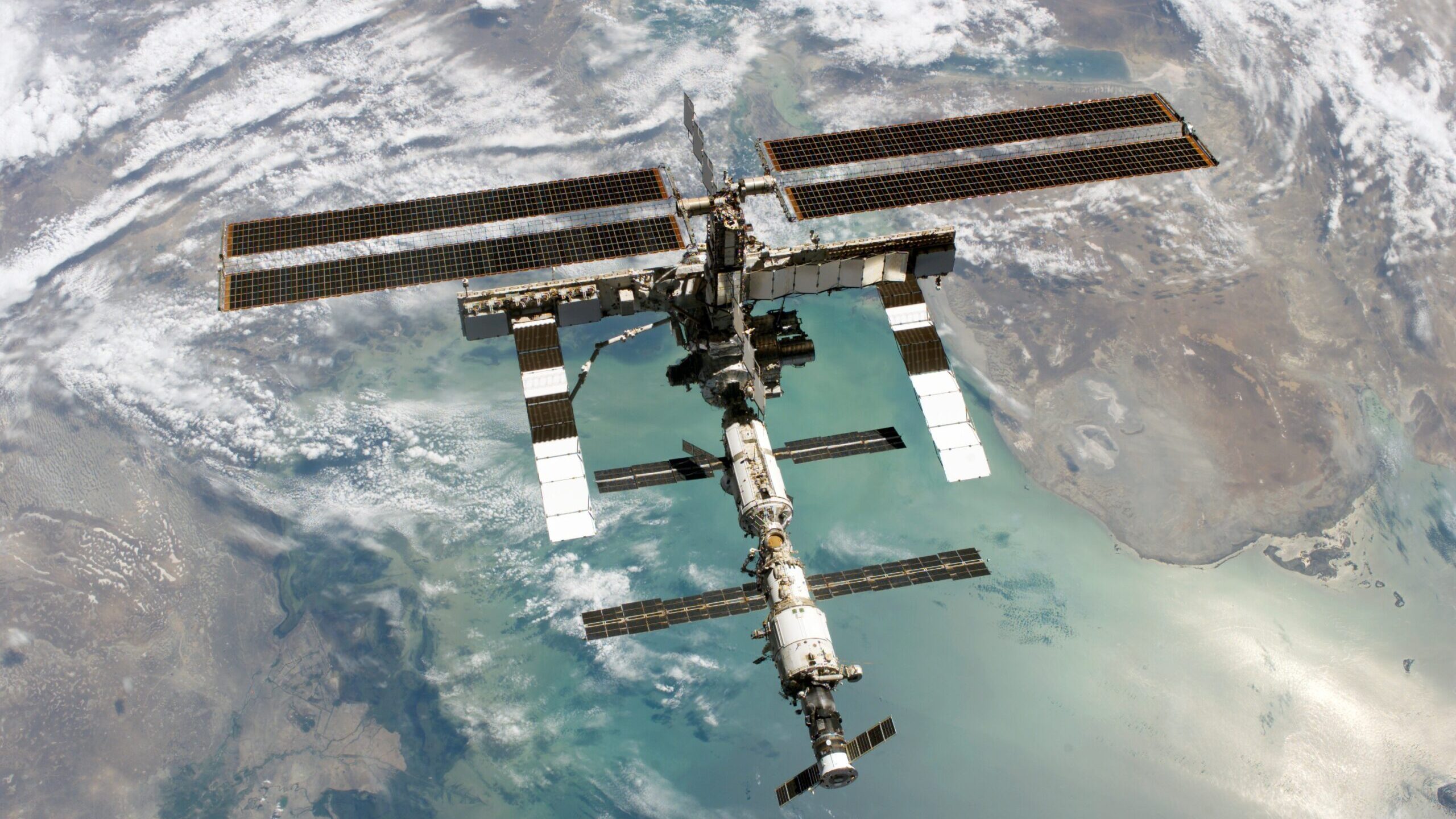
Backdropped against the Caspian Sea, this full view of the International Space Station was photographed by a crewmember onboard the Space Shuttle Discovery after the undocking of the two spacecraft. (NASA)
WASHINGTON: The surprise Russian anti-satellite weapons test, and the resulting explosion of debris that could endanger Low Earth Orbit for years to come, are a prime examples of why space tracking firm LeoLabs is rushing to expand and improve its commercial radar network, CEO Dan Ceperley told Breaking Defense.
The biggest problem for the burgeoning number of LEO space operators, he explained, is the need for more persistent and ubiquitous space monitoring data.
“This space domain awareness capability, it needs to scale. Because the last the last thing we need are surprises,” he said.
LeoLabs today released data visualizations showing the actual orbits of some of the largest pieces of debris from Russia’s defunct, Soviet-era signals intelligence satellite Cosmos 1408 — which the Russian Defense Ministry today admitted it had destroyed in a test — as it passes through the orbit of the International Space Station (ISS).
Ceperley said the firm will be continuously monitoring the debris and publishing “conjunction” data to warn operators when pieces are coming close to working satellites.
Some new debris objects from today's breakup (orange orbit) visualized relative to ISS (blue orbit). Objects in white denote largest pieces of Cosmos 1408 tracked by LeoLabs. (Dots not to scale.) Debris ranges in altitude from 440 to 520km. pic.twitter.com/4ElV9KrK4P
— LeoLabs, Inc. (@LeoLabs_Space) November 16, 2021
According to Reuters, Russian Defense Minister Sergei Shoigu told reporters in Moscow today that the debris “doesn’t pose any threat to space exploration.” Meanwhile, Russia’s civil space agency, Roscosmos, which operates the ISS in tandem with NASA, issued a vague online statement this morning, saying: “Ensuring crew safety has always been and remains our top priority.”
Space scientists around the world, and the laws of physics, beg to differ.
While much of the debris cloud created by the test will “fall” out of orbit within months, some will continue drift through Low Earth Orbit (below 2,000 kilometers in altitude) for at least two years.
Making matters worse for the crews of both the ISS and China’s Tiangong space station, both stations orbit smack dab in the middle of the debris cloud’s path. The ISS crew already has been warned at least twice to shelter in their “lifeboats” due to the debris cloud, which passes close to the station about every 90 minutes.
Stephen Young of the Union of Concerned Scientists, explained in a Twitter thread Monday that fragmentation of a satellite weighing as much as the Cosmos 1408, some 2,200 kilograms, in an orbit between 470-490 kilometers can be expected to result in roughly 1,600 pieces of debris bigger than 10 centimeters in diameter (the size of a softball).
And indeed, US Space Command, in a statement Monday as well, said that it is already tracking some 1,500 pieces of debris from the event.
Also concerning, according to Young, the ASAT test can be expected to produce at least another 80,000 pieces between one and five centimeters in diameter — still big enough to seriously damage a satellite and the ISS, but extremely hard to track with reliability. SPACECOM’s Space Surveillance Network of radars and telescopes only tracks objects down to 10 centimeters in LEO.
While LeoLabs also can reliably detect and track objects down to about 10 centimeters, Ceperley stressed that his team is working hard to improve its ability to see smaller space debris.
“The founding mission is to get down to two centimeters in size. We’re working on the data pipeline for that. We’ve actually got radar hardware in place to do it over the coming year. And a big focus next year is upgrading all the analytics,” he said.
Ceperley added that aside from the danger to all LEO operators created by the Russian test, “on a normal day, the biggest risk to everybody in Low Earth Orbit is all the small stuff that nobody else is tracking. And so that’s a major focus for us.”
LeoLabs just last month announced plans to install two new S-band radars in Western Australia, he noted, bringing the number of operational sites up to six. The Silicon Valley startup has working radar sites in Alaska, Texas, Costa Rica, and New Zealand; and Cerperley said ground has been broken for another site in the Azores. Once the Azores and Australian facilities are up and running next year, the firm will be operating 10 radars.
The current plan is to expand to 24 sites spread across the globe.
“We’re scaling it out,” Ceperley said, noting that events like the Russian ASAT test put a huge spotlight on “why you actually want a massive global network of radars” to monitor LEO.
Iran says it shot down Israel’s attack. Here’s what air defense systems it might have used.
Tehran has been increasingly public about its air defense capabilities, including showing off models of systems at a recent international defense expo.


























